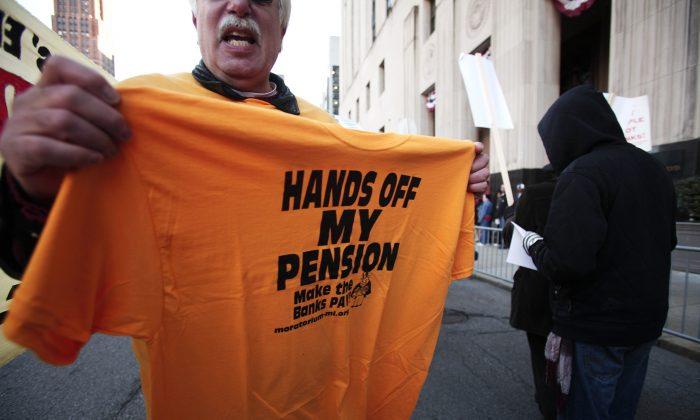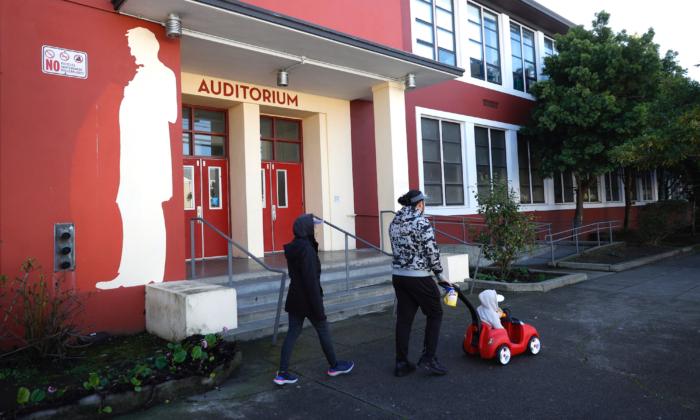Just like the old American folk song, The old gray mare, she ain’t what she used to, times are a-changing.
A generation ago, retirement set in after a lifetime of work. But by the buckets, this picture of predictability is capsized as baby boomers, defined as those born between 1946 and 1964, are updating resumes and hitting the trail in search of new careers.
Whether a mathematical issue that it takes more to get by on than just a pension or that people are living longer and healthier, it’s undeniable that older Americans are fast becoming a demographic force, not about to complacently live out the golden years. The American Association of American Colleges on the website 50 Plus notes the percentage of the over-50 population grew from just 13 percent in 1900 to about 30 percent today, and will hit 40 percent by 2020 when about one-quarter of the labor force will be 50-year-olds and up.
Reflecting this changing tide, employment events are not any more just for the young generation about to embark on their first job. The new normal is job fairs and service centers that cater to the growing demand for employment among 50-year-olds and up.
“Fifty is the new thirty,” says Camille Levee, Executive Director of Woman at Work, a resource and advisement center in Pasadena, Calif., for unemployed of both genders and all ages. “This group asks ‘what’s next?’”
Fifty-plus job fairs for fifty and over have sprung up across the land. The Jewish Council on Aging in Rockville, MD hosted a job fair in May, which astonishingly gathered 3,500 job seekers. And in association with AARP’s Back to Work 50+ initiative, older worker events have expanded to college campuses. Pima Community College in Tuscon, Ariz., drew several hundred to its 50-plus fair in September. An event earlier this month in Pasadena attracted not just job hunters but prominent elected official,s including the area congresswoman Judy Chu. “The fifty-plus population has so much experience and we cannot waste that experience, that’s why it’s important to open up opportunities,” she said to the assembly.
It is not just numbers that figure into this senior job-fair upsurge, however. Many employers covet the mature worker, notes Levee, for the experience and expertise they bring to the job. Soft skills like being adept at conversing with customers in diverse situations add value to this age sector.
In spite of the many pluses, Ms. Levee believes there still exist the age-old obstacles to overcome. It is not enough to list achievements, awards, and so forth, according to Ms. Levee, whose group maintained a booth at the Pasadena job fair. “Every time we interview, we tend to look at what we have accomplished rather than what we can accomplish to make the employer a greater success. We let age be a crutch when we don’t get the job.”
Sujey Trujillo of Labor Ready, a temp agency in Pasadena, sounds this sentiment in her caution for seniors to shed the stereotype of inflexibility. “It’s a matter of being open to change and talking about what you can contribute to the company.”
Both Ms. Trujillo and Levee may echo Dale Carnegie, whose principles on human interaction were presented in a breakout session at the Pasadena job fair, and his seminal book How to Win Friends and Influence People. “Let the past bury its dead… you can’t saw sawdust,” Carnegie wrote.
“‘When you spend more time on what you have accomplished rather than your vision and dreams, then you are stuck,’” Ms. Levee says, quoting Jo Ann Jenkins, CEO of AARP.
This was the first year of the 50-plus job fair in Pasadena, but if Raul Martinez, deputy director of the Senior Center, host of the Pasadena event, has his say, it won’t be the last. “Help for people in this age group is severely lacking in this society,” said Martinez. “They bring intangible skills to the table. This [job fair] was a shot in the arm.”
Martinez was pleased with the turnout of about a couple hundred job seekers armed with resumes and dressed for success. On hand were employers such as JPL/NASA, government agencies including the FBI and the Peace Corps, and the gamut of educational institutions, retail, and hospitality groups. Other breakout sessions addressed age-related issues with applications and job interviews by Devry University and entrepreneurship by SCORE, a service of the Small Business Administration that counsels business start ups. AARP notes that one in six people over 50 are looking to be self-employed.
Ironically, the demographic group eternally dogged as set in their ways, a hee-hawing mule in the face of change, is the same one at the forefront of workscape change. What might be a what’s-wrong-with-this-picture game, of people coming to traditional retirement age and yet talking about a future of things to do and summits to reach before they sleep, foments a workforce more inclusive than ever of older workers who might otherwise be whiling away the ticks of the clock with the good old days on their minds. Job fairs like the one in Pasadena and elsewhere, and career service centers for older Americans, have seemed to answer the bell to the new breed of older Americans.
Tim Wahl, author of a memoir on his childhood farm life in New York State, teaches English-as-a-second language to adults in Los Angeles.





